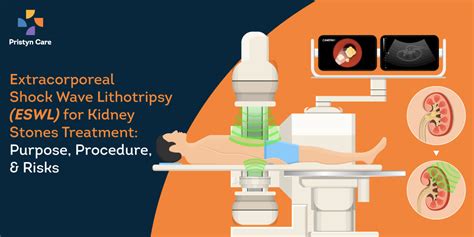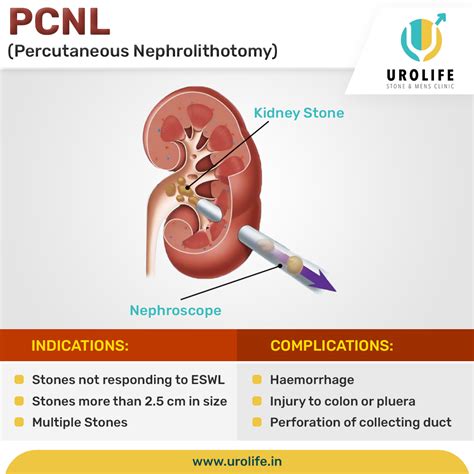Intro
Discover 5 ways kidney stone surgery can relieve pain, including minimally invasive procedures, laser surgery, and more, to effectively treat kidney stones and prevent future occurrences, improving urinary health and overall well-being.
Kidney stones are a common health issue that affects millions of people worldwide. These small, hard deposits can cause severe pain, nausea, and vomiting, and if left untreated, can lead to more serious complications. Fortunately, there are various treatment options available, including surgery. In this article, we will explore the different types of kidney stone surgery, their benefits, and what to expect during the procedure.
Kidney stones can be caused by a variety of factors, including dehydration, diet, and genetics. While some stones can pass on their own, others may require medical intervention. Surgery is often necessary when the stone is too large to pass, causes a blockage, or leads to infection. The goal of kidney stone surgery is to remove the stone and restore normal kidney function.
Kidney stone surgery has undergone significant advancements in recent years, with minimally invasive procedures becoming increasingly popular. These procedures offer several benefits, including reduced recovery time, less pain, and smaller incisions. In this article, we will delve into the different types of kidney stone surgery, including the latest techniques and technologies.
Kidney Stone Surgery Overview

Kidney stone surgery is a medical procedure that involves the removal of a kidney stone. The type of surgery performed depends on the size, location, and type of stone, as well as the patient's overall health. The most common types of kidney stone surgery include extracorporeal shock wave lithotripsy (ESWL), percutaneous nephrolithotomy (PCNL), ureteroscopy, laparoscopic surgery, and open surgery.
Types of Kidney Stone Surgery
The type of surgery performed depends on the individual case. For example, ESWL is often used for smaller stones, while PCNL is used for larger stones. Ureteroscopy is used for stones that are located in the ureter, while laparoscopic surgery and open surgery are used for more complex cases.Extracorporeal Shock Wave Lithotripsy (ESWL)

ESWL is a non-invasive procedure that uses shock waves to break up the kidney stone into smaller pieces that can then pass out of the body in the urine. This procedure is often used for smaller stones and is usually performed under general anesthesia. The benefits of ESWL include minimal recovery time, less pain, and no incisions.
Benefits of ESWL
The benefits of ESWL include: * Minimal recovery time * Less pain * No incisions * Can be performed on an outpatient basis * High success rate for smaller stonesPercutaneous Nephrolithotomy (PCNL)

PCNL is a minimally invasive procedure that involves making a small incision in the back and inserting a scope and instruments to remove the kidney stone. This procedure is often used for larger stones and is usually performed under general anesthesia. The benefits of PCNL include high success rates, minimal recovery time, and less pain.
Benefits of PCNL
The benefits of PCNL include: * High success rates for larger stones * Minimal recovery time * Less pain * Can be performed on an outpatient basis * Minimally invasiveUreteroscopy

Ureteroscopy is a minimally invasive procedure that involves inserting a small scope and instruments through the urethra and bladder to remove the kidney stone. This procedure is often used for stones that are located in the ureter and is usually performed under general anesthesia. The benefits of ureteroscopy include high success rates, minimal recovery time, and less pain.
Benefits of Ureteroscopy
The benefits of ureteroscopy include: * High success rates for stones in the ureter * Minimal recovery time * Less pain * Can be performed on an outpatient basis * Minimally invasiveLaparoscopic Surgery

Laparoscopic surgery is a minimally invasive procedure that involves making several small incisions in the abdomen and inserting a scope and instruments to remove the kidney stone. This procedure is often used for more complex cases and is usually performed under general anesthesia. The benefits of laparoscopic surgery include high success rates, minimal recovery time, and less pain.
Benefits of Laparoscopic Surgery
The benefits of laparoscopic surgery include: * High success rates for complex cases * Minimal recovery time * Less pain * Can be performed on an outpatient basis * Minimally invasiveOpen Surgery

Open surgery is a traditional procedure that involves making a large incision in the abdomen to remove the kidney stone. This procedure is often used for very complex cases and is usually performed under general anesthesia. The benefits of open surgery include high success rates, but it often requires a longer recovery time and more pain.
Benefits of Open Surgery
The benefits of open surgery include: * High success rates for very complex cases * Ability to remove very large stones * Can be performed in emergency situations * High success rates for patients with multiple stonesWhat are the risks and complications of kidney stone surgery?
+The risks and complications of kidney stone surgery include bleeding, infection, and damage to surrounding organs. Additionally, some patients may experience pain, nausea, and vomiting after the procedure.
How long does it take to recover from kidney stone surgery?
+The recovery time for kidney stone surgery varies depending on the type of procedure performed. For minimally invasive procedures, patients can often return to normal activities within a few days. For more complex procedures, recovery time can take several weeks.
Can kidney stones be prevented?
+Yes, kidney stones can be prevented by staying hydrated, eating a healthy diet, and avoiding certain foods that can increase the risk of stone formation. Additionally, patients with a history of kidney stones should work with their doctor to develop a prevention plan.
In conclusion, kidney stone surgery is a medical procedure that involves the removal of a kidney stone. There are several types of kidney stone surgery, including ESWL, PCNL, ureteroscopy, laparoscopic surgery, and open surgery. Each procedure has its own benefits and risks, and the type of surgery performed depends on the individual case. By understanding the different types of kidney stone surgery and their benefits, patients can make informed decisions about their treatment options. We invite you to share your thoughts and experiences with kidney stone surgery in the comments below. If you have any questions or concerns, please don't hesitate to reach out to us.
